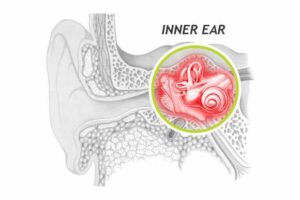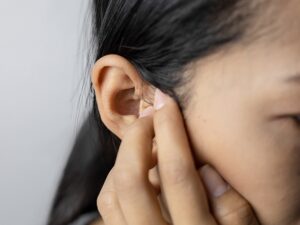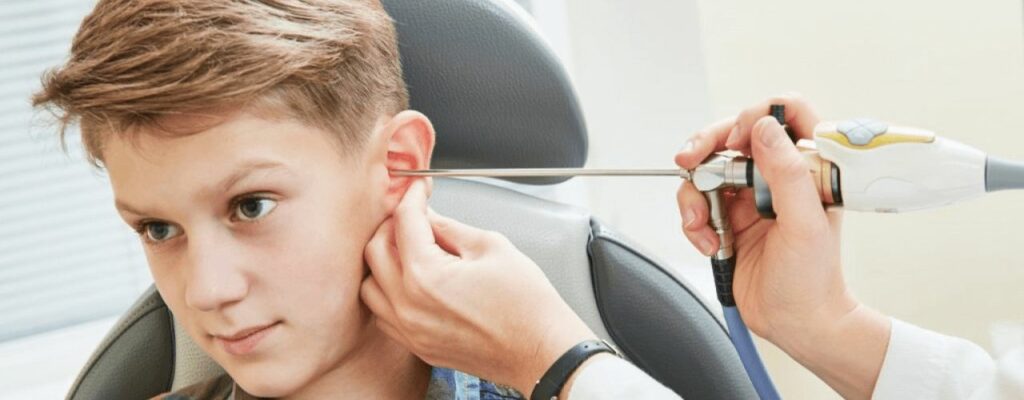Inner ear trauma can be a result of many different things, such as a head injury, sudden movement, or pressure changes. It can cause problems with balance, hearing, and even nausea. If you are experiencing any of these symptoms after an accident or other incident, you may need to seek physical therapy treatment. In this blog post, we will discuss how physical therapy can help with inner ear trauma and the benefits that come with it!
Contents
What Is Inner Ear Trauma?
 Inner ear trauma is a type of head injury that can occur when the head is subject to a sudden force or blow. This force can cause the delicate structures of the inner ear to become damaged, resulting in a loss of balance and equilibrium.
Inner ear trauma is a type of head injury that can occur when the head is subject to a sudden force or blow. This force can cause the delicate structures of the inner ear to become damaged, resulting in a loss of balance and equilibrium.
Inner ear trauma is most often seen in athletes who participate in contact sports, such as football or hockey. However, it can also occur in car accidents or falls. The causes are not simple, as the head can be subject to many different types of forces.
The most common symptom of inner ear trauma is dizziness. This can range from a mild sense of unsteadiness to severe vertigo, which is a spinning sensation. Other symptoms may include:
- Nausea
- Vomiting
- Headache
- Tinnitus (ringing in the ears)
- Hearing loss
If you experience any of these symptoms after a head injury, it is important to see a doctor right away. Inner ear trauma can be difficult to diagnose, as the symptoms can be similar to those of other conditions, such as concussion or whiplash.
How Can Physical Therapy Help With Inner Ear Trauma?
If you have suffered from inner ear trauma, you may be wondering how physical therapy can help. The inner ear is a delicate structure and when it is damaged, it can cause a number of problems. Physical therapy can help to improve your balance and coordination, as well as help relieve pain and improve your hearing.
Your inner ear is responsible for your sense of balance and equilibrium. When it is damaged, you may suffer from vertigo or dizziness. Physical therapy can help to improve your balance by working on your vestibular system. This system includes the muscles in your neck and the nerves that connect to your inner ear.
By strengthening these muscles and improving the nerve connections, physical therapy can help to improve your balance and reduce dizziness.
What Are Some Examples Of Physical Therapy?
 As we mentioned before, physical therapy can help to improve your balance and coordination. This is often done through vestibular rehabilitation exercises. These exercises help to retrain your brain to process information from your inner ear correctly.
As we mentioned before, physical therapy can help to improve your balance and coordination. This is often done through vestibular rehabilitation exercises. These exercises help to retrain your brain to process information from your inner ear correctly.
Other types of physical therapy that can help with inner ear trauma include:
Balance training
It is important to retrain your body on how to balance after inner ear trauma. This can be done through a variety of different exercises that challenge your sense of balance. For example, you may stand on one leg or walk in a straight line. Balance training is often done with the help of a physical therapist.
Gait training
Trauma to the inner ear can also cause problems with walking and coordination. Physical therapy can help by teaching you how to walk correctly and improving your coordination. For instance, you may learn how to shift your weight when turning or how to place your feet when walking on uneven surfaces.
Strength training
This type of physical therapy for inner ear trauma can help to improve the function and range of motion of the muscles surrounding the ear. This can help to reduce pain and prevent further injury. Some strength training exercises might include:
- Shoulder shrugs
- Neck rolls
- Head tilts
- Ear pulls
Aerobic exercise
Aerobic exercise is important for inner ear trauma patients because it helps to improve blood circulation and promote healing. It is also beneficial for overall health and well-being. For example, aerobic exercise can help to reduce stress and anxiety, improve sleep quality, and boost energy levels.
Patients should start slowly and gradually increase the intensity of their workouts as they become more comfortable. It is important to consult with a doctor or physical therapist before starting an aerobic exercise program.
Endurance training
 Endurance training refers to any type of exercise that helps you build up your stamina and endurance. This type of training is often used by athletes to help them improve their performance. However, it can also be beneficial for people who suffer from inner ear problems. Endurance training can help to improve the function of the inner ear by increasing the blood flow to the area.
Endurance training refers to any type of exercise that helps you build up your stamina and endurance. This type of training is often used by athletes to help them improve their performance. However, it can also be beneficial for people who suffer from inner ear problems. Endurance training can help to improve the function of the inner ear by increasing the blood flow to the area.
If you are suffering from inner ear trauma, physical therapy can help. These exercises and treatments can help to improve your balance, coordination, and hearing. If you are unsure of where to start, talk to your doctor or a physical therapist about the best plan of action for you.
How Long Does It Take For Inner Ear Injury To Heal?
It can take a long time for the inner ear to heal after an injury. The ear is a very delicate organ, and it is not always easy to predict how long the healing process will take. In some cases, the inner ear may never completely heal. If you have suffered an inner ear injury, it is important to be patient and follow your doctor’s instructions.
Moreover, the duration of recovery is different for every individual. While some people may only experience minor symptoms, others may have more severe injuries that require a longer recovery time.
There are many different treatment options available for inner ear injuries. And, a combination of medication and physical therapy might be most effective for you. Medication can help to reduce inflammation and pain. Physical therapy can help to improve your balance and coordination.
Therefore, it is important to discuss all of your treatment options with your doctor. Together, you can develop a plan that is right for you.
How Effective Is Physical Therapy?
While choosing the best form of treatment, you will often hear your doctor say that the “jury is still out” on a particular form of therapy. This means that there is not enough evidence to know for sure if the therapy actually works. The good news is that physical therapy for inner ear trauma is one of those therapies where we do have enough evidence to say that it is effective.
A study has looked at the effects of physical therapy on patients with inner ear trauma. The study found that physical therapy was effective in reducing symptoms and improving the quality of life for these patients.
So, if you are suffering from inner ear trauma, you can be confident that physical therapy can help you. Physical therapy can help to reduce your symptoms and improve your quality of life. Just be sure to talk to your doctor first to see if physical therapy is right for you.
Conclusion
In a nutshell, inner ear trauma can cause a number of balance and hearing problems. If you or someone you know is struggling with these issues, physical therapy may be able to help. A physical therapist can develop a specifically tailored treatment plan that can help improve symptoms and quality of life.
Henceforth, do not hesitate to contact a physical therapist for help with your inner ear trauma. With the right treatment, you can improve your symptoms and live a better life.
Physical Therapy has always been proven to help patients recover from pain. Hence, if you’re experiencing Back pain, Shoulder pain, Knee pain, Neck pain, Elbow pain, Hip pain, or Arthritis pain, a physical therapist at MantraCare can help: Book a physiotherapy session.


